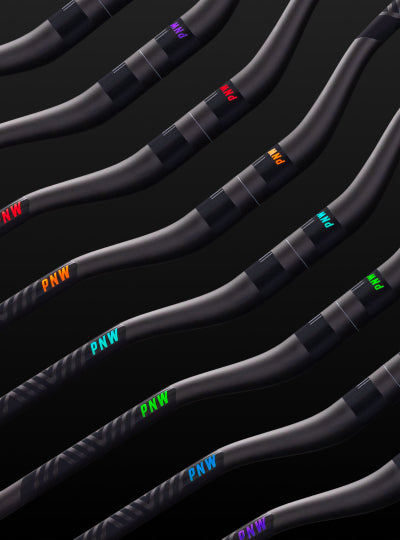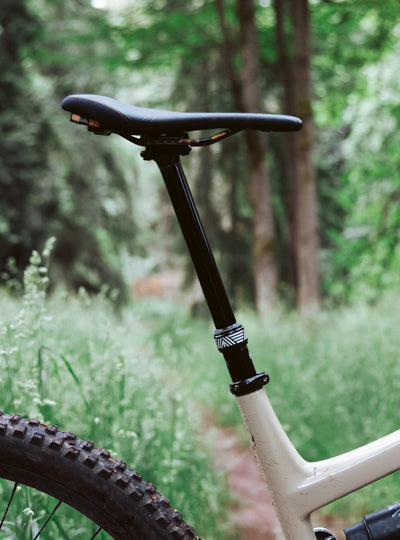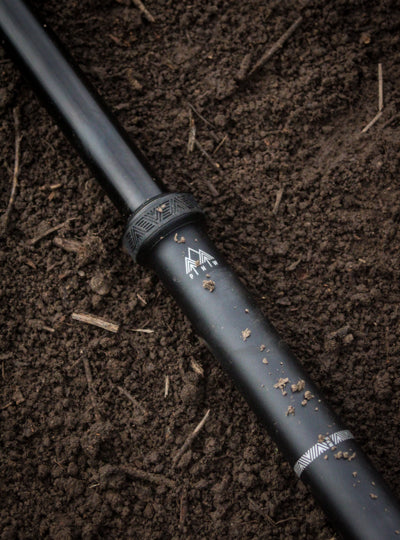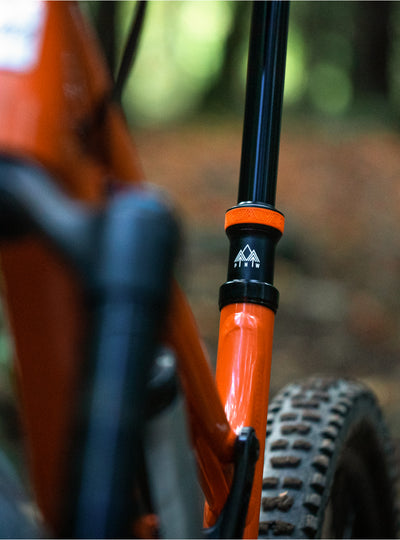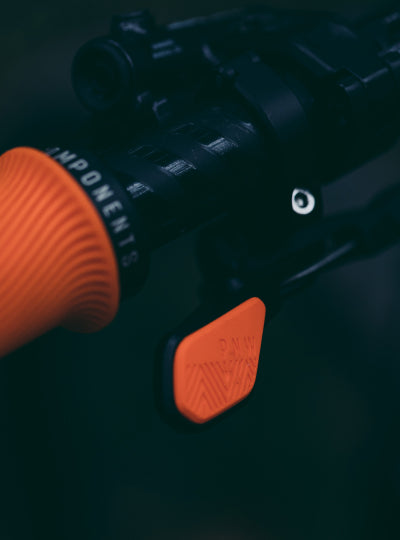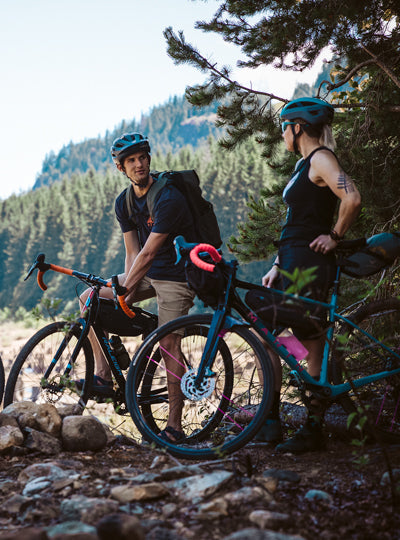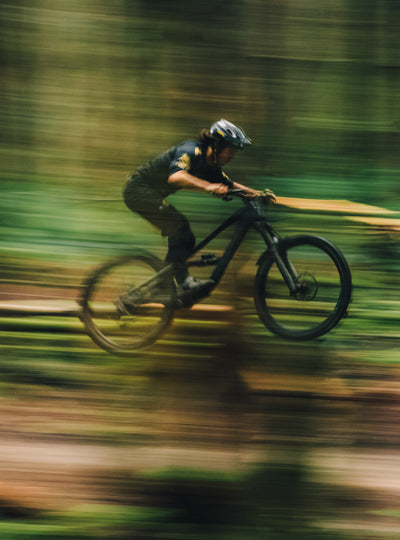Ryan Cleek of the one-and-only Bike Mag has taken our Rainier Dropper Post for a lengthy spin, and (spoiler alert) he's dubbed it "tough-to-beat" when combined with our Loam Lever. We are always thrilled to see positive reviews from editorial sources, but it's a special day when you receive a glowing review like this from one of the most established, if not THE most established, news source in the industry. Read on to see why Ryan trusts his Rainier IR Dropper Post to get the job done.
Bike Mag Review: Rainier Dropper Post
For a good while, I’ve had an ear to the ground for a 150-millimeter-drop post that would fit inside my large-sized 2018 Stumpjumper’s curved seat tube. On paper, there are a handful of posts that appear to qualify, but a few on-bike measurements and a closer look revealed that, on nearly all of those options, the post’s cable-actuated engagement mechanism would collide with the frame’s inner wall. This discouragement was short-lived, as I soon became aware of PNW Components dropper offerings and gave its internally routed Rainier post a go.

PNW is a burgeoning brand out of Seattle and produces clever dropper posts for mountain, gravel and cyclocross bikes, as well as stems, handlebars, and aftermarket dropper levers. Its coil-sprung Rainier post was developed on the brand’s backyard terrain, which to use their words is “...where quad-blistering climbs lead to epic descents, where your elevation gain is a badge of honor that earns you miles of flight down steep singletrack.” The alloy-constructed Rainier was designed around an increase in durability and a decrease in stack height. The Rainier dropper is competitively priced at $180 if you have your own dropper lever. Or it can come with PNW’s basic Puget Lever included for $200 or for $240 with the Loam Lever, which sells separately for $70 aftermarket.
The infinitely adjustable Rainier is available in 125-, 150- and 170-millimeter drops, 30.9 or 31.6-millimeter diameters and weighs 585 grams (150mm version). Seat adjustment is handled with an easy-to-use two-bolt, zero-offset head, and for those also concerned with the posts’ overall lengths, the 150-mm travel option measures 464-millimeters-long, while the 170-millimeter version is listed at 494 millimeters top to bottom. (PNW has a frame fit guide, here.)

Cable meets post via a traditional barrel nut clamped on the bare end of the cable. You can choose to leave the dropper lever disconnected and set tension once you’re all routed up or go lever-first and leave the barrel nut about 20 millimeters from the end of the housing end-cap and just slide it into the engagement mechanism at the end of the post. Clear as mud?
Nearly every mechanical dropper post I’ve ridden uses essentially the same style of barrel nut and engagement system; so by now I can usually eyeball the location for the nut and then wrangle a few millimeters of slack with the lever barrel adjuster. Those installing a mechanically actuated post like this for the first time would benefit from consulting the PNW’s easy-to-follow Rainier manual (PDF on website); especially because repeated repositioning the barrel nut can cause the cable to fray and one’s head to ache.

Over the past several months, I’ve exclusively ridden the Rainier post on my trail bike; and simply put, the performance has been nothing but smooth and reliable. Nearly every post I’ve ever ridden has more unwanted play right out of the box than the Rainier has shown to date. PNW’s DU bushings do a nice job of keeping the post running smooth and largely wobble-free.
For comparison, I did a few rides on the Rainier’s included Puget lever. The shiny, pewter-colored, prior-generation device works well and functioned as expected, yet, the new Loam lever provides a nice tactile feel with rubber padding that’s comfortable and helpful in wet conditions. Also, the amount of force needed to actuate the Loam lever was minimal, and it’s maintained smooth action and throw since installation. Plus, it looks bitchin'.

For those counting grams at home, yes, a coil-sprung dropper is a tad heavier than the air-sprung variety (here, about 30 grams more when compared PNW’s air-sprung Bachelor dropper); however, after having been burned by a few finicky air-sprung droppers in my day, a smooth-operating and dependable coil version is welcome. It’s not the only thing that can go wrong, but without it, there’s one less. The Rainier has performed flawlessly in all weather conditions, and I’ve had a few of them this year. But most of all, it’s perfectly met my needs of offering the additional drop while also actually fitting inside my frame. I’m 5-foot-9 and usually ride a size large to best suit my lengthy torso. As fellow knuckle-draggers know, the struggle is real. On the same note, the Rainier’s compact overall length also makes it a great option for shorter riders on smaller frames which were probably spec’d with lesser-drop posts because of similar fitment issues. Overall, the reliable smooth-operating Rainier IR post is a steal at $179. Throw in the sleek Loam lever for another $70 and when it comes to aesthetics and performance, you’ve got one tough-to-beat combination.



